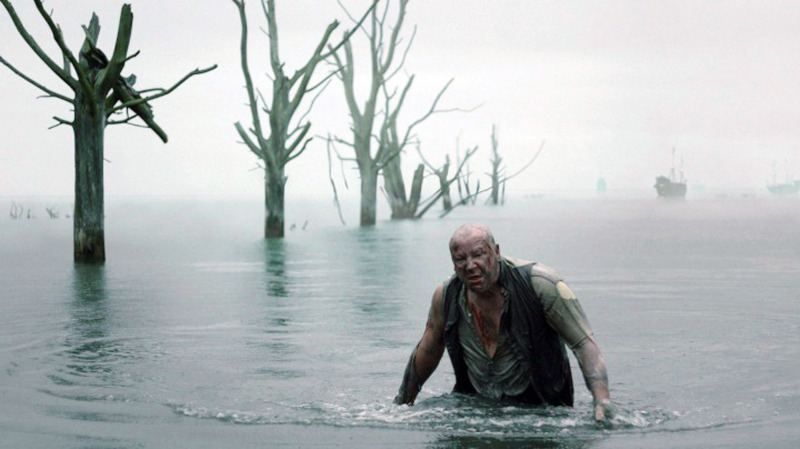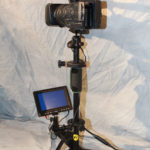
Grading Great Expectations
Posted on Mar 26, 2012 by Alex Fice
Magwitch, actor Ray Winstone, escapes the CGI prison ships. Heavy ‘on camera’ filtering sets the cold blue bleakness of Magwitch’s character even though it was mid-summer at the time of the shoot.
“I would love to tell you that the cinematic look of Great Expectations was really down to me, but it really wasn’t.” So says a modest Jet Omoshebi a well thought of colourist at Deluxe London. But Jet and the DoP Florian Hoffmeister came up with a way of handling the classic Dickens tale that would do big HDTVs justice. Jet went on to explain how the colourist is fitting in to this new world of cinematic TV drama. “I think the role of the colourist is changing especially at the moment. We’re all feeling our way with very different formats and a close relationship with your colourist is a good thing to have.
“So on one hand Great Expectations isn’t a huge grading story but what is possibly more interesting is the way Florian and I worked together. We got together right at the beginning to discuss formats and filters and he went away and shot some tests and brought them in spending half a day with me looking at things.
“The two real worries for both of us was time and budget. The show was quite under budgeted for it’s ambition and so time was tight as well. The other part of that was that it was a winter show and they were going to shoot through summer. So potentially there was a huge amount of work to do. So we had to make the decision whether or not we did the transformation in post or whether he try and do it with filters. We decided that the best way was for him to shoot it mainly because there wasn’t going to be enough time or money.
“Once you’ve established that it’s a question of going away and trying to be inventive with the shooting, we looked at various different filter options from soft and colour filters to come up with something that we could efficiently grade. That would give us the right starting place really. So that process was fairly collaborative and involved quite a few tests that I would grade up and send back to him. He couldn’t really get a clear idea on set of how it was going to look so there was quite a lot of reassurance through the shooting process.
“In the grade there was generally a lot of work to do having said all that but not in essence but in shaping it really. Bringing through the key details and pushing back other details. One thing we did do quite a lot of was to try and give Miss Haversham an ethereal quality of her own. He wouldn’t have had the time to light her and follow that lighting throughout. So we were able to put a mask around just her and tracked through all of her shots and I layered up three or four different effects to achieve the look.
“We also did quite a lot of work in terms of the story arc of Miss Haversham and the house in that there had to be a feeling of decay through the three episodes. Also if you watch all three of them the middle one is about Pip going off to London. So everything is shiny, bright and colourful. Its also much more vibrant as we’re looking at the world through Pip’s eyes. So those were the things we were able to do which helped the narrative through emotional cues if you like.
“Each camera system has its own characteristics and you grade around those characteristics. The Alexa has a certain set of advantages and disadvantages. The advantages are the way it captures. It has a much more filmic curve, which means you get a very soft roll-off on the highlights and shadows. It captures a huge amount more in those two areas which is where you get all your flexibility. So in that way it responds a lot more like film does which is really lovely. It has a kind of ‘dirtiness’, thats the wrong word for it but it has a texture to it that is much more filmic. It’s not noise and it’s not grain, dirtiness is the only way I can describe it.
“When you put it up against some of the other systems you see that it’s got a kind of softness to it that you expect to have from film, that’s where the ‘magic’ is held!
The disadvantage is that because it captures such a large range actually getting a nice, meaty, filmic black is quite a challenge. It’s great because it performs very well in low light but it does capture sometimes more than you do want to see. So it does require quite a bit of shaping in the grade. But we’re all getting more used to using these new systems and I think the collaboration is where the value is.“













